Best Ford Mustangs of all time

There are few automotive icons that can match the history and enthusiastic fanbase of the Ford Mustang. The hype started all the way back in 1964, with a stunning long-hood, short-deck design based on the humble underpinnings of the Ford Falcon compact car. The resulting machine went on to become almost impossibly successful, with more than 400,000 units sold in its first year and over a million within its first two years on the market. The 10 millionth Mustang was sold in 2018. No wonder the Mustang would inspire its own automotive category, appropriately known as "pony cars."
A brand-new seventh-generation Mustang debuted at the 2022 Detroit Auto Show (seen above), and it looks to extend the life of the classic American V8 engine for as long as regulations allow it. But is the latest Mustang the best Mustang? That's up for debate. We love the new Dark Horse, but we think there's even more goodness to come from the quintessential pony car.
So let's go back in time and take a look at the Mustang's high points throughout the years (as opposed to some of its low points). And don't worry. The current Mustang is set to get better and better with each passing year.
The 13 best Ford Mustang models of all time:
1965 Ford Mustang Shelby GT350
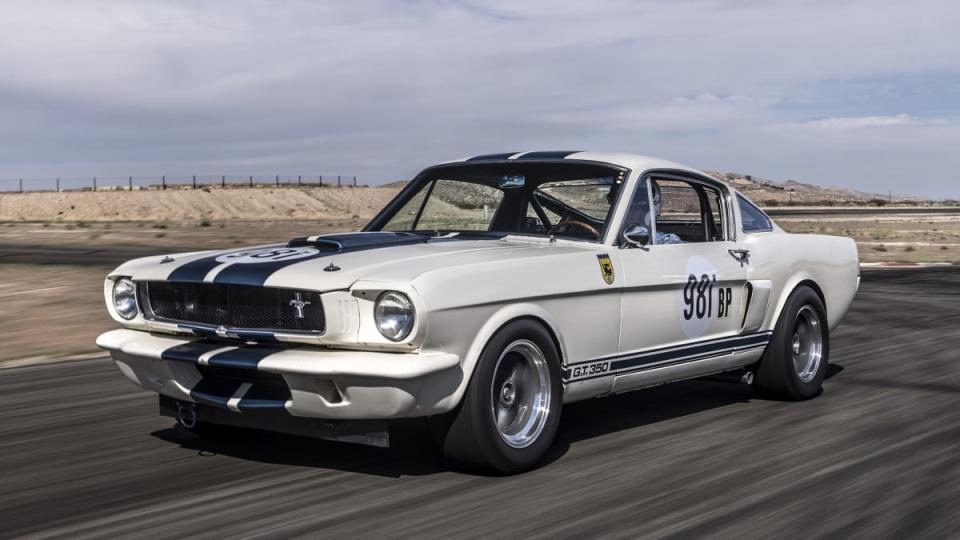
We're going to kick off our lists of the best Ford Mustang models of all time with one of the oldest of the breed. Ford launched its seminal pony car in 1964, and it was an instant success. Ford hoped to build 100,000 'Stangs in the first year but ended up quadrupling that figure before its first model year came and went ... with a little help from creating model-year magic, that is.
The ultimate version of this first Mustang, in our minds at least, is the Shelby GT350 that was offered during the 1965 and 1966 model years. Each of them was powered by a 289 cubic-inch K-Code V8 engine. A bigger carburetor, high-rise intake manifold and free-flowing exhaust manifolds boosted power from 271 to 306 horsepower. The Shelby factory made a whole host of changes to the stock Mustang platform in order to make it competitive at the race track, and it worked well enough to win the SCCA racing championship in its class for three straight years.
1969 Ford Mustang Shelby GT500 Cobra Jet
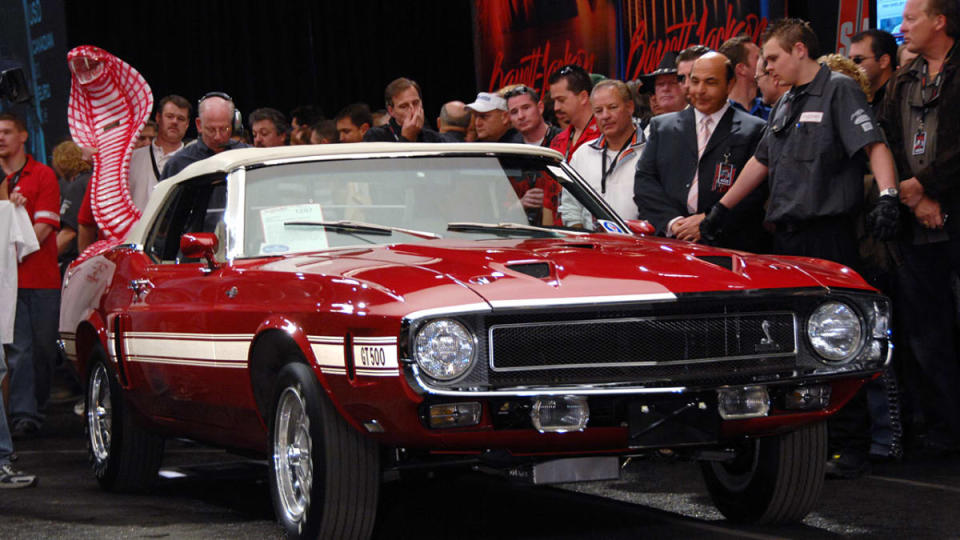
Interestingly enough, Carroll Shelby canceled his contract with Ford to produce Shelby-branded Mustangs following the 1969 model year. Several years had passed since the first GT350, and by 1969, Shelby's actual involvement in the program was quite limited. Most of the 1969 Shelby GT500 was really designed by Ford, not Shelby, and it was a far cry from the nimble track-ready competition car that it had been.
Looking back at history, however, these 1969 (and carryover 1970) Shelby GT500s truly stand out from the rest of the pack with their unique styling — get a load of the extended hood and front fenders with their ram air ductwork — and the most powerful street-ready engine Ford had to offer. The 428 cubic-inch Cobra Jet V8 engine was rated at 335 hp and 440 pound-feet of torque.
1969 Ford Mustang Boss 429
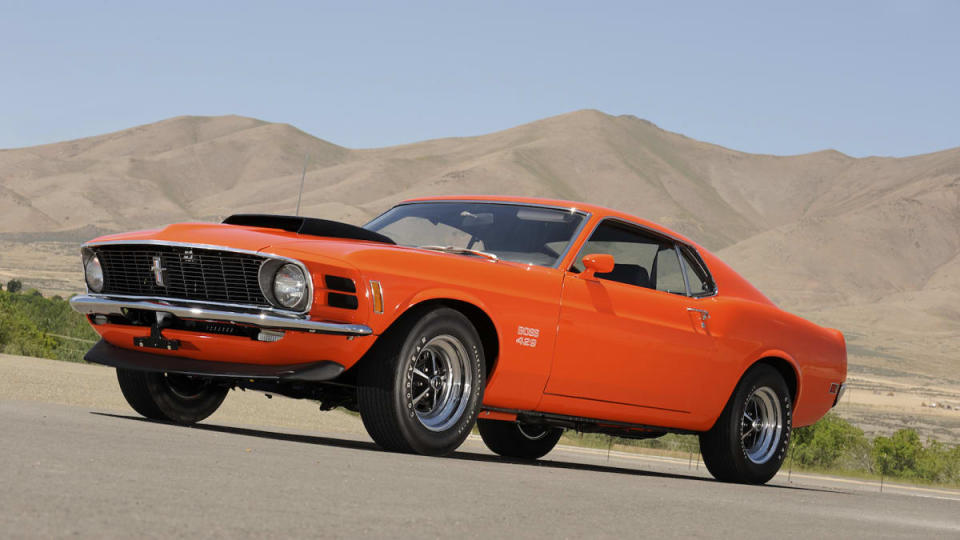
Did you notice how we said "most powerful street-ready engine Ford had to offer" when we looked at the Shelby above? Well, Ford did actually have a more powerful V8 in its stable, but it was designed for race tracks, not the street. But that didn't stop the automaker from shoehorning the oversize 429 into the Mustang for the 1969 and carryover 1970 model years.
Ford wanted to use its new 429 V8 engine in NASCAR racing, but to legally do so, had to offer the engine to paying customers who wanted to own one for street use. It wasn't easy to fit this big block engine in between the Mustang's fenders, requiring a drastically modified front suspension setup that was carried out by an outfit in Michigan called Kar Kraft. The factory rated the NASCAR-special engine at 375 hp and 450 lb-ft. It was known as a cantankerous beast when it wasn't being driven at full throttle, but when it was driven that way, it actually made way more power than its factory rating. It remains one of the coolest Mustang models of all time.
1970 Ford Mustang Boss 302
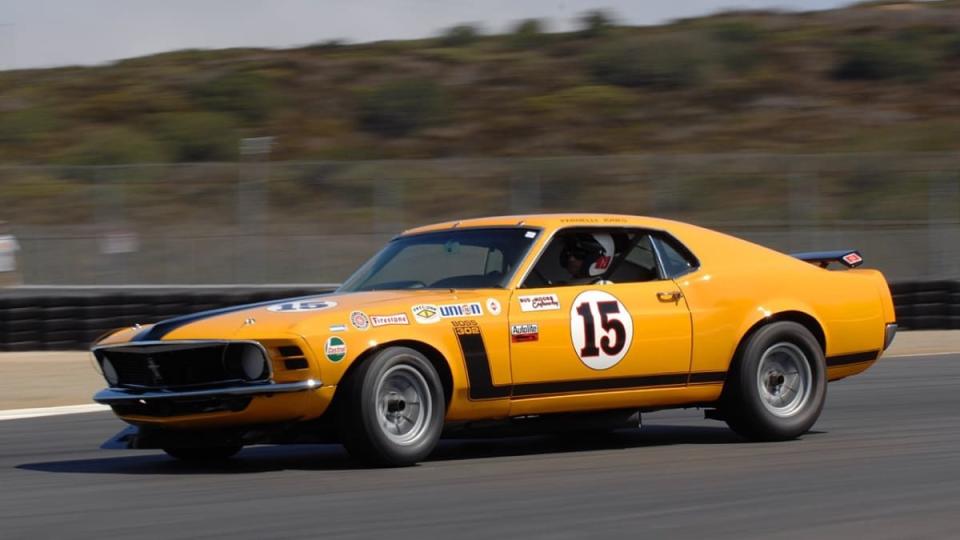
Getting back to the kind of racing the small (by 1960s and 1970s American standards, that is) Mustang was really meant for, we now take a look at the smaller-engined Boss sibling. The Boss 302 first appeared in 1969, aimed squarely at the Chevy Camaro Z/28. The pony car wars were won both on the sales floor and on tracks used for the Trans-Am racing series, and that's where Ford looked to compete with the Boss 302.
The engine package combined a specially prepared version of Ford's 302 cubic-inch Windsor V8 engine block with the free-flowing Cleveland heads. An aggressive camshaft with solid lifters, strong and lightweight engine internals and a bunch of track-spec modifications allowed the racing engine to rev well past the limits imposed on street engines. It was rated at 290 hp and an equal number of pound-feet. We went with the 1970 version simply because that was the year it beat Chevy to win the Trans-Am championship. They are just as cool today as they were back then.
1985.5 Ford Mustang SVO
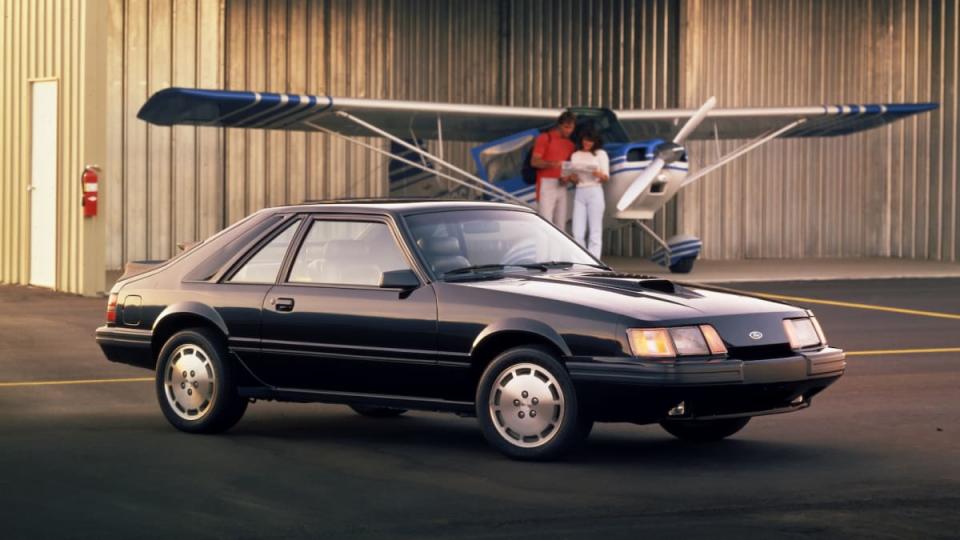
We're graciously skipping over the remainder of the 1970s, not entirely because there weren't any cool Mustangs sold — we'd go so far as to say even the late-1970s had a few interesting models that were very popular and proper cars for the era — but because nothing really stands out as better than its predecessor in any meaningful way. On to the 1980s, then, and specifically to the Ford Mustang SVO. We're not keen to overlook the seminal Ford Mustang GT or its 5.0-liter (really 4.9, but who's counting?) V8 engine, but the SVO was really the more interesting machine. It looked different, with a two-tier wing on the back and a ducted hood, but it's under the bodywork where things get really cool.
Halfway through the 1985 model year, Ford increased the performance of the SVO's 2.3-liter turbocharged four-cylinder engine, landing at a high point of 205 hp and 248 lb-ft of torque. That was enough to make the SVO a worthy competitor to its V8-powered GT sibling. But more important than sheer thrust were the major suspension and chassis improvements that made the SVO handle better than any Mustang that had come before.
1993 Ford Mustang SVT Cobra
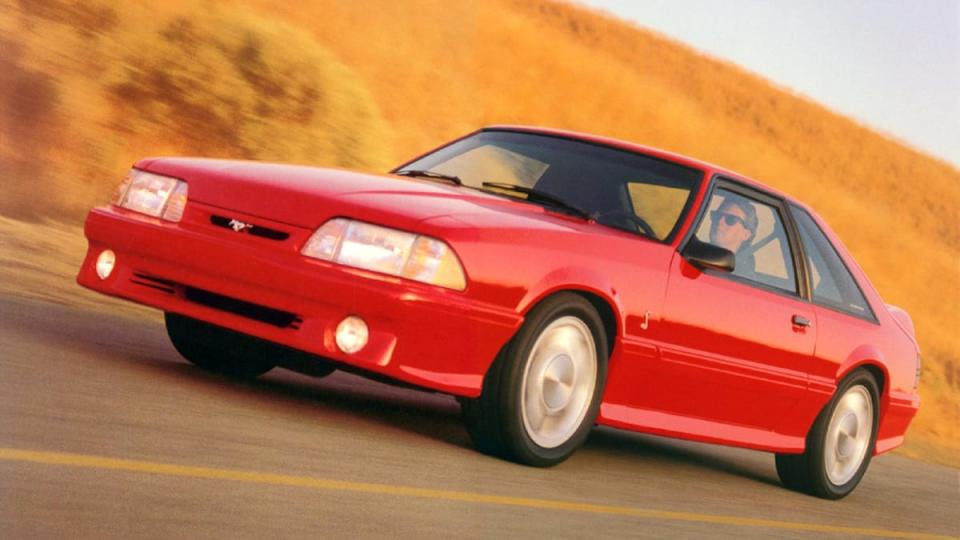
Ford unleashed its internal Special Vehicle Team (SVT) on the Mustang for the final year of its now-classic, squared-off Fox Body years, and the end result was the 1993 Ford Mustang SVT Cobra. The main party piece was a heavily modified 302-cubic-inch V8 engine that featured GT-40 "High Flow" cast iron cylinder heads and roller rocker arms. The intake manifold was unique, the camshaft was aggressive, the fuel injectors were enlarged, a new computer system was installed and a high-flow exhaust system was bolted underneath. The end result was 235 hp and 280 lb-ft. That doesn't sound impressive today, but it was excellent for the time period.
For race duty, a higher-spec Cobra R was developed with upgraded suspension and driveline components. Everything that wasn't necessary for speed was stripped out, including the rear seat and the air conditioning, dropping 450 pounds of weight from the regular Cobra (though some track-ready equipment added some of that back). Not many were made, and it's a serious collectible today.

 Yahoo Autos
Yahoo Autos 
